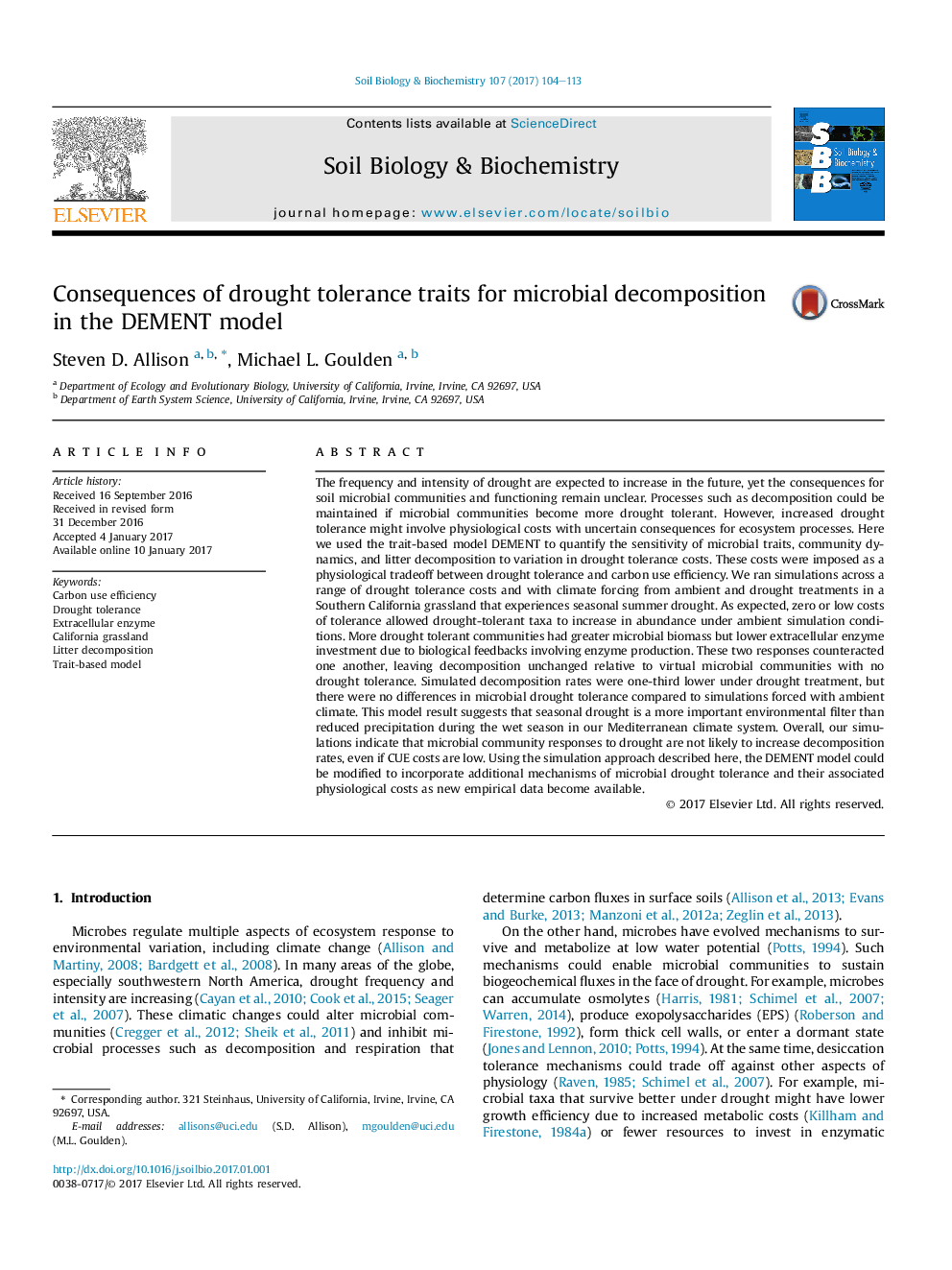| کد مقاله | کد نشریه | سال انتشار | مقاله انگلیسی | نسخه تمام متن |
|---|---|---|---|---|
| 5516419 | 1542577 | 2017 | 10 صفحه PDF | دانلود رایگان |

• Drought tolerance included in trait-based model of microbial decomposition.
• Drought tolerance assumed to trade off against carbon use efficiency.
• Drought tolerance traits increase microbial biomass but reduce enzyme investment.
• Litter decomposition rates remain similar despite changes in drought tolerance.
• Seasonal drought affects drought tolerance more than 50% rainfall reduction.
The frequency and intensity of drought are expected to increase in the future, yet the consequences for soil microbial communities and functioning remain unclear. Processes such as decomposition could be maintained if microbial communities become more drought tolerant. However, increased drought tolerance might involve physiological costs with uncertain consequences for ecosystem processes. Here we used the trait-based model DEMENT to quantify the sensitivity of microbial traits, community dynamics, and litter decomposition to variation in drought tolerance costs. These costs were imposed as a physiological tradeoff between drought tolerance and carbon use efficiency. We ran simulations across a range of drought tolerance costs and with climate forcing from ambient and drought treatments in a Southern California grassland that experiences seasonal summer drought. As expected, zero or low costs of tolerance allowed drought-tolerant taxa to increase in abundance under ambient simulation conditions. More drought tolerant communities had greater microbial biomass but lower extracellular enzyme investment due to biological feedbacks involving enzyme production. These two responses counteracted one another, leaving decomposition unchanged relative to virtual microbial communities with no drought tolerance. Simulated decomposition rates were one-third lower under drought treatment, but there were no differences in microbial drought tolerance compared to simulations forced with ambient climate. This model result suggests that seasonal drought is a more important environmental filter than reduced precipitation during the wet season in our Mediterranean climate system. Overall, our simulations indicate that microbial community responses to drought are not likely to increase decomposition rates, even if CUE costs are low. Using the simulation approach described here, the DEMENT model could be modified to incorporate additional mechanisms of microbial drought tolerance and their associated physiological costs as new empirical data become available.
Journal: Soil Biology and Biochemistry - Volume 107, April 2017, Pages 104–113